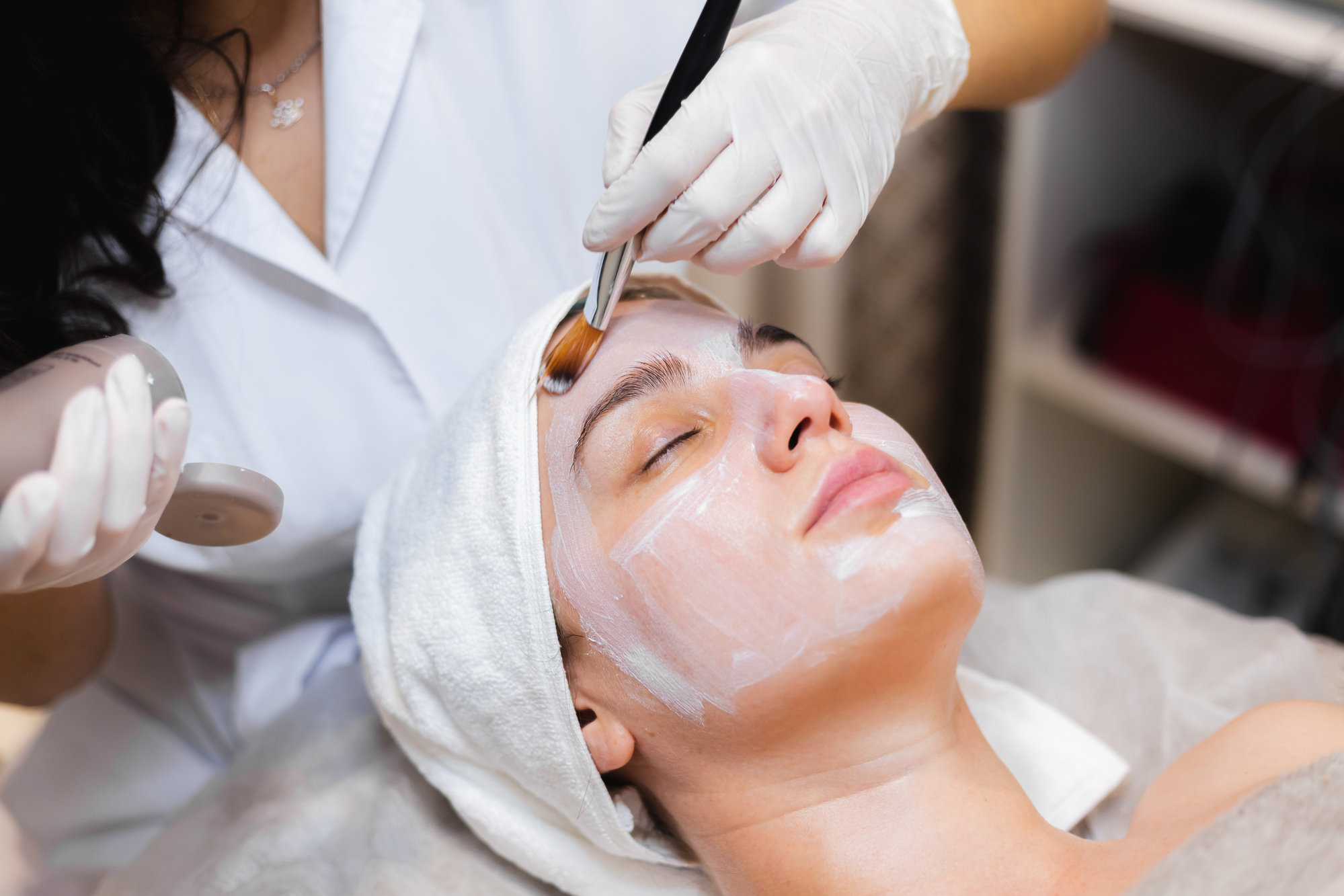Chemical peels are a popular cosmetic procedure used to rejuvenate the skin, treat various skin concerns, and improve overall complexion. By applying a chemical peel treatment solution to the skin, these peels remove the outermost layers, allowing new, healthier skin to emerge. Depending on the depth and intensity, chemical peels are categorized into superficial, medium, and deep peels, each catering to different skin types and concerns.
In this blog, we will explore the types of chemical peel, their benefits, and the conditions they treat.
What Are Chemical Peels?
Chemical peels are skin-resurfacing treatments that exfoliate dead skin cells and promote skin regeneration. They are commonly used for:
- Reducing fine lines and wrinkles
- Treating acne scars
- Fading hyperpigmentation
- Improving skin texture and tone
- Minimizing sun damage
The type of chemical peel chosen depends on the patient’s skin type, the problem being addressed, and the desired outcome.
Types of Chemical Peels
1. Superficial Peels (Light Peels)
Superficial peels are the mildest form of chemical peels, targeting only the outermost layer of the skin (epidermis). These are ideal for first-timers and those with sensitive skin.
Common Ingredients:
- Alpha Hydroxy Acids (AHAs) like glycolic acid and lactic acid
- Beta Hydroxy Acids (BHAs) like salicylic acid
Benefits:
- Gently exfoliates the skin
- Improves skin tone and texture
- Treats minor pigmentation and acne
Downtime: Minimal to none. You may experience slight redness or peeling for a day or two.
Best For:
- Dull skin
- Mild acne
- Uneven skin tone
2. Medium Peels
Medium-depth peels penetrate the epidermis and the upper dermis, making them more effective for treating moderate skin concerns.
Common Ingredients:
- Trichloroacetic Acid (TCA)
- Jessner’s solution (a mix of lactic acid, salicylic acid, and resorcinol)
Benefits:
- Reduces fine lines and wrinkles
- Improves acne scars
- Fades moderate pigmentation issues like melasma
Downtime:
- Typically 5-7 days of peeling and redness
- Sunscreen and moisturizer are essential during recovery
Best For:
- Fine lines
- Acne scars
- Uneven skin tone
3. Deep Peels
Deep chemical peels are the most intensive option, penetrating deeper into the dermis. These are often performed under medical supervision due to their potency.
Common Ingredients:
- Phenol
- High concentrations of TCA
Benefits:
- Removes deep wrinkles
- Treats severe sun damage
- Corrects significant scarring
Downtime:
- Requires 2-3 weeks of recovery
- Skin may remain red and sensitive for several weeks
Best For:
- Deep wrinkles
- Severe scars
- Significant skin texture issues
Specialty Chemical Peels
In addition to the traditional types, there are specialized chemical peels designed for specific conditions or skin types.
1. Acne Chemical Peels
Targeting acne and acne scars, these peels often use salicylic acid to unclog pores and reduce inflammation.
Benefits:
- Clears acne
- Reduces oil production
- Minimizes post-inflammatory hyperpigmentation
2. Brightening Peels
Formulated to enhance skin radiance, these peels use ingredients like kojic acid and vitamin C.
Benefits:
- Reduces dullness
- Fades pigmentation
- Enhances glow
3. Anti-Aging Peels
Containing AHAs and retinoids, these peels target signs of aging like fine lines, wrinkles, and age spots.
Benefits:
- Boosts collagen production
- Improves skin elasticity
- Smoothens fine lines
What to Expect During a Chemical Peel Treatment
- Consultation: A dermatologist evaluates your skin type and concerns to recommend the appropriate peel.
- Preparation: The skin is cleansed thoroughly before the peel is applied.
- Application: The chemical solution is applied for a specified duration, depending on the type and depth of the peel.
- Neutralization: The solution is neutralized and removed.
- Aftercare: A moisturizer and sunscreen are applied to protect the treated skin.
Post-Treatment Care
Proper aftercare is crucial for the success of chemical peels:
- Avoid sun exposure and always use sunscreen.
- Keep the skin hydrated with a gentle, fragrance-free moisturizer.
- Do not pick or peel off flaking skin.
- Follow your dermatologist’s instructions for cleansing and skincare.
Are Chemical Peels Safe for Everyone?
While chemical peels are generally safe, they are not suitable for everyone. People with:
- Active infections
- Severe rosacea or eczema
- Certain medications like isotretinoin
Should consult a dermatologist for alternative treatments.
Conclusion
Chemical peels offer a versatile solution to various skin concerns, from mild acne and pigmentation to deep wrinkles and scars. Whether you’re new to chemical peels or seeking a more intensive treatment, consulting a professional ensures the best results for your skin type and goals.
Invest in your skin and reveal a radiant, refreshed you with the right chemical peel treatment!

